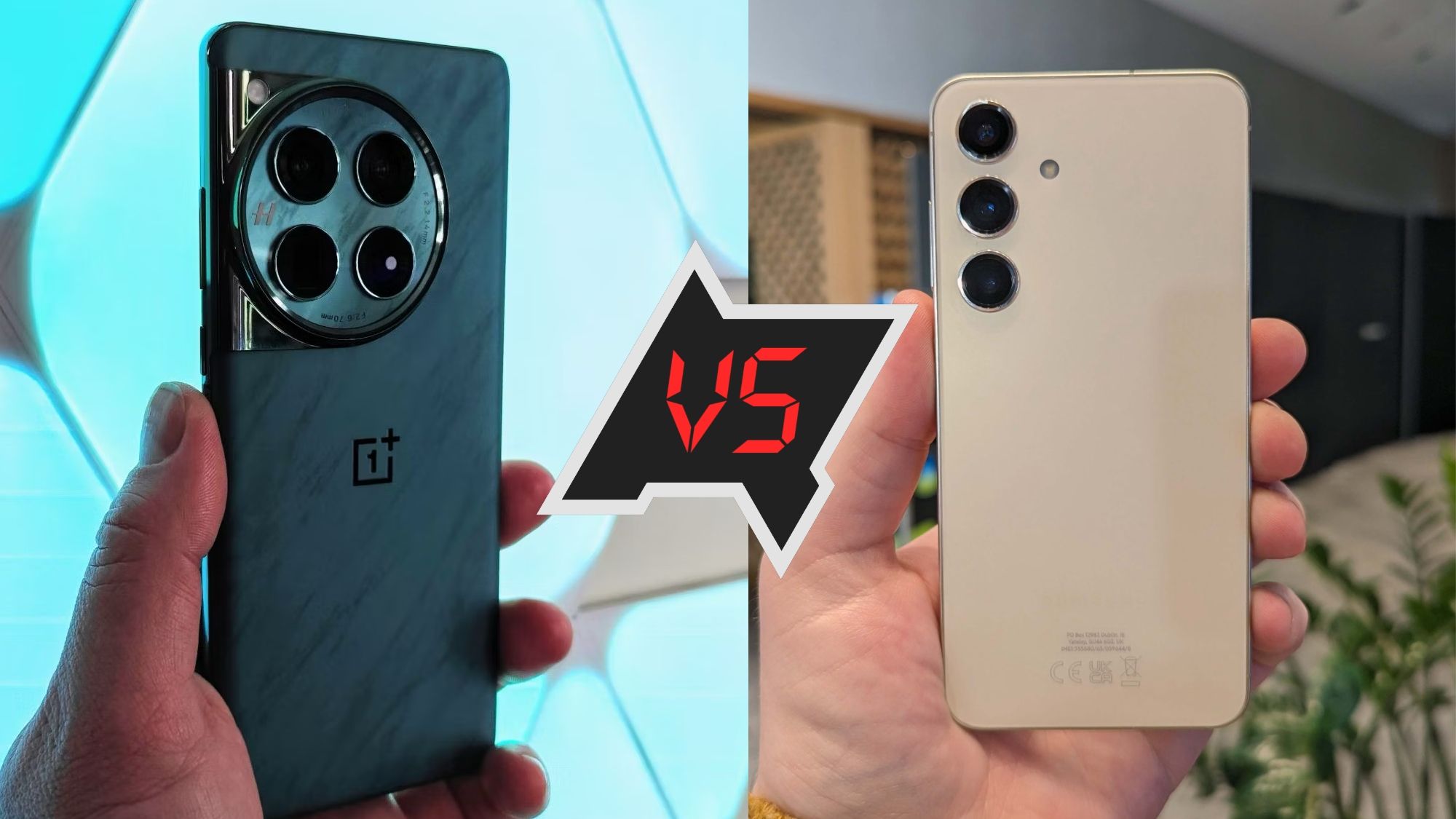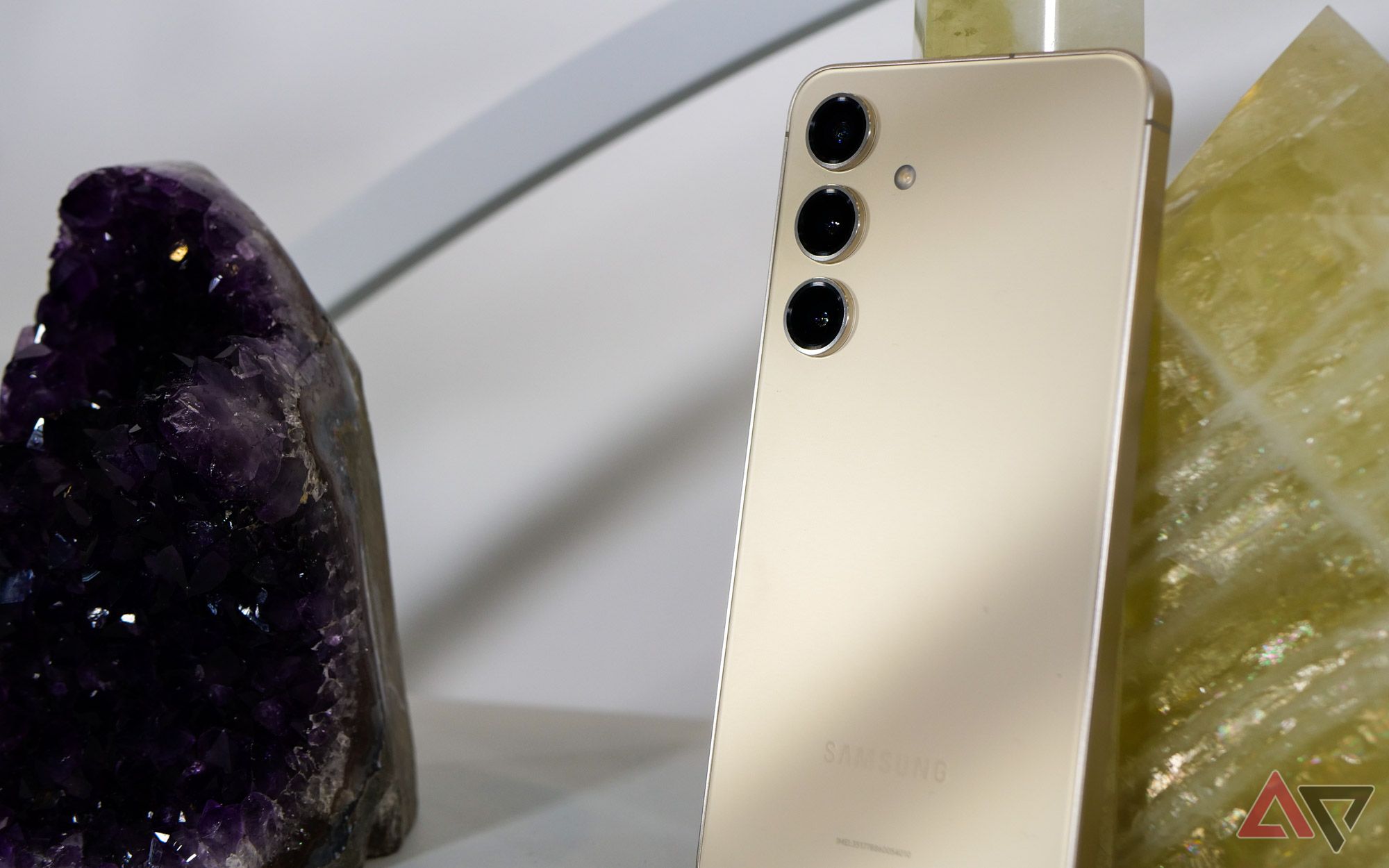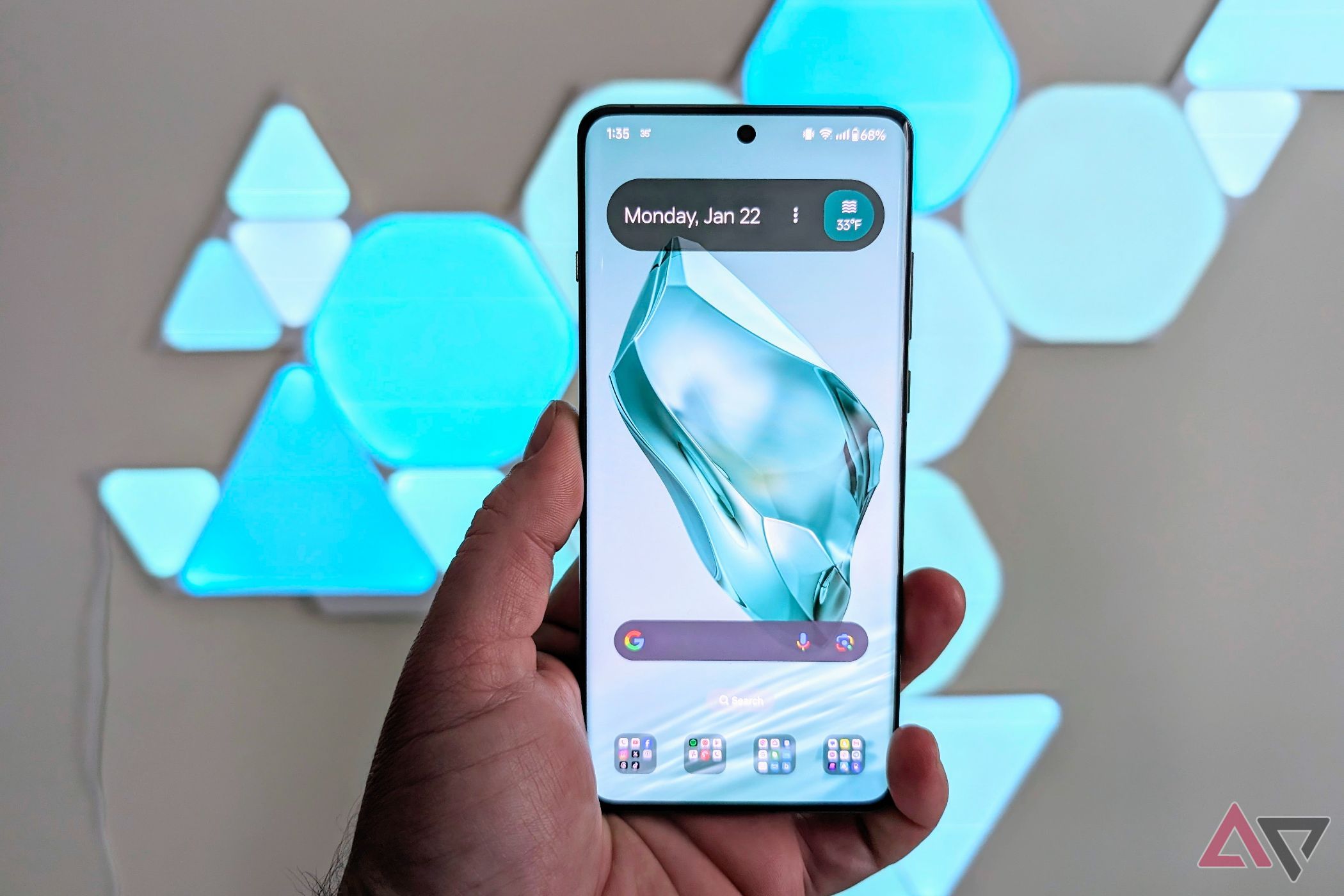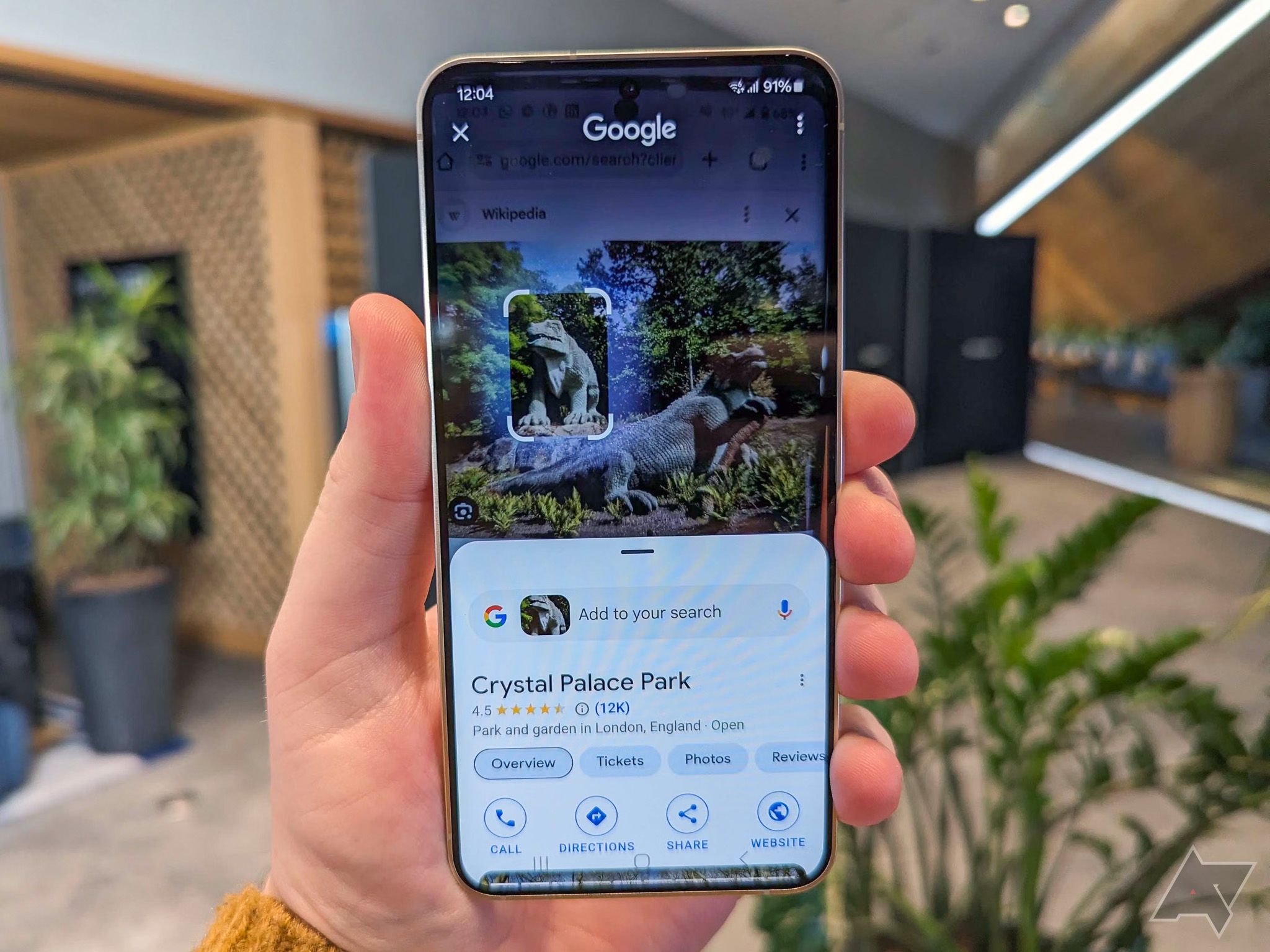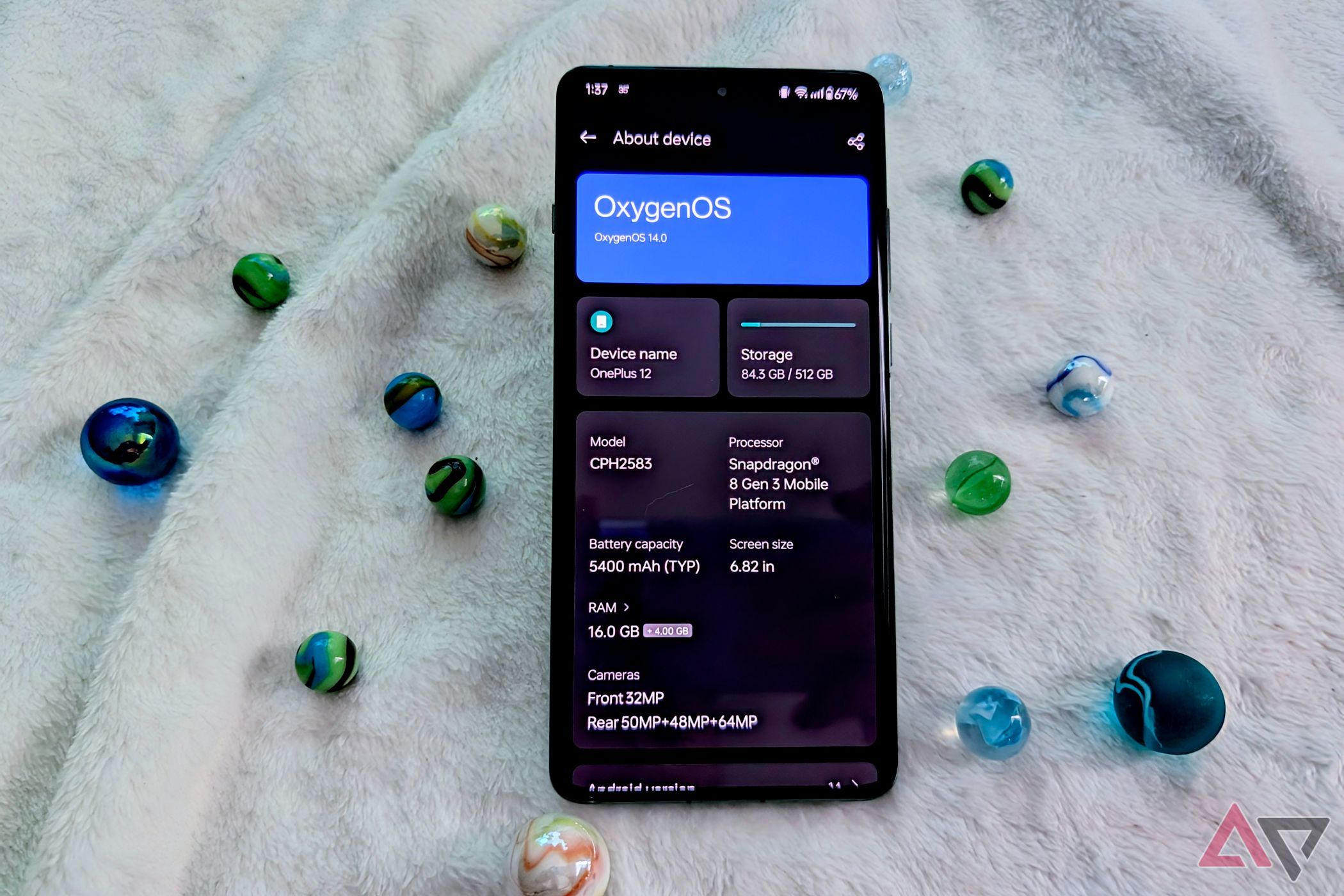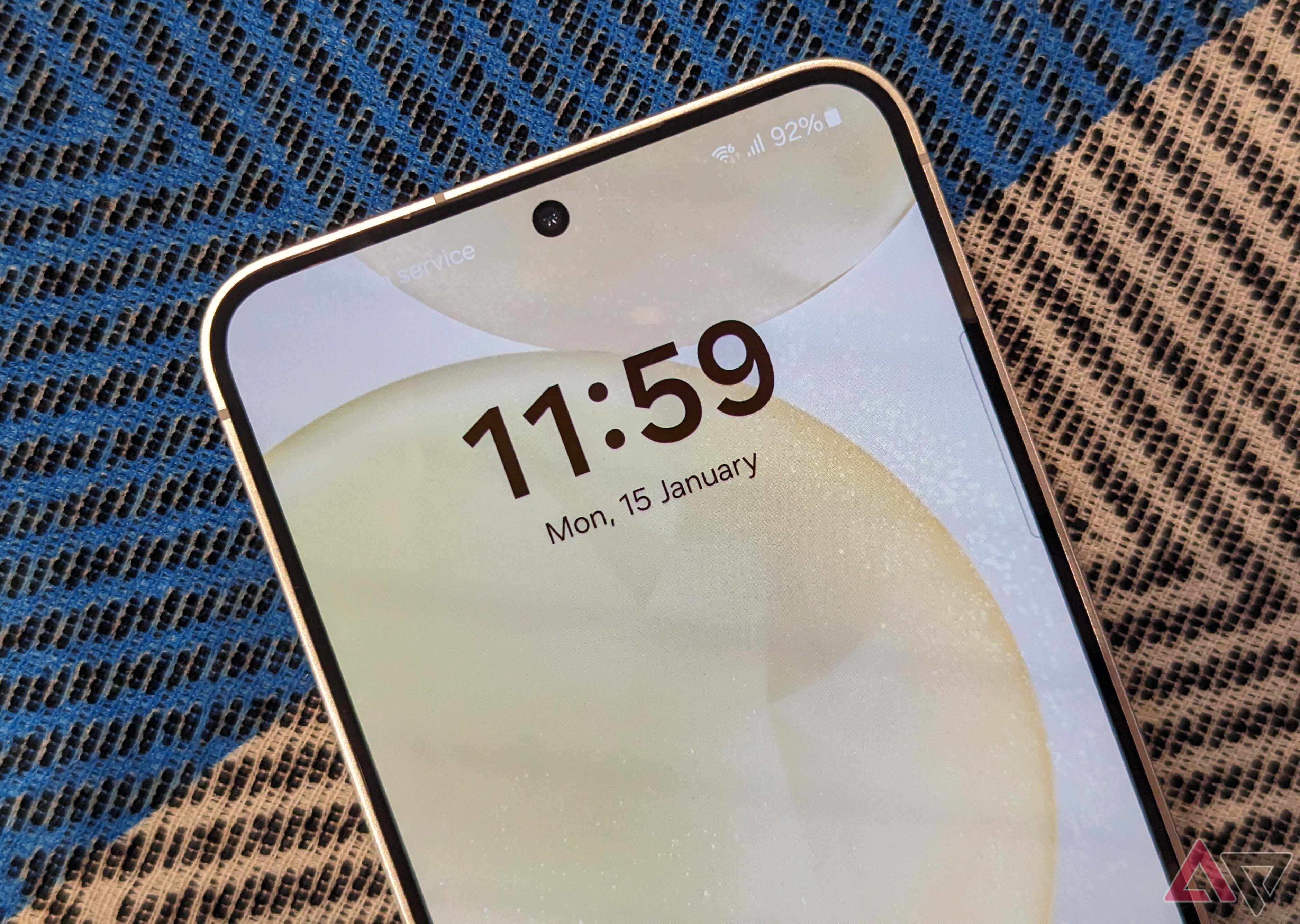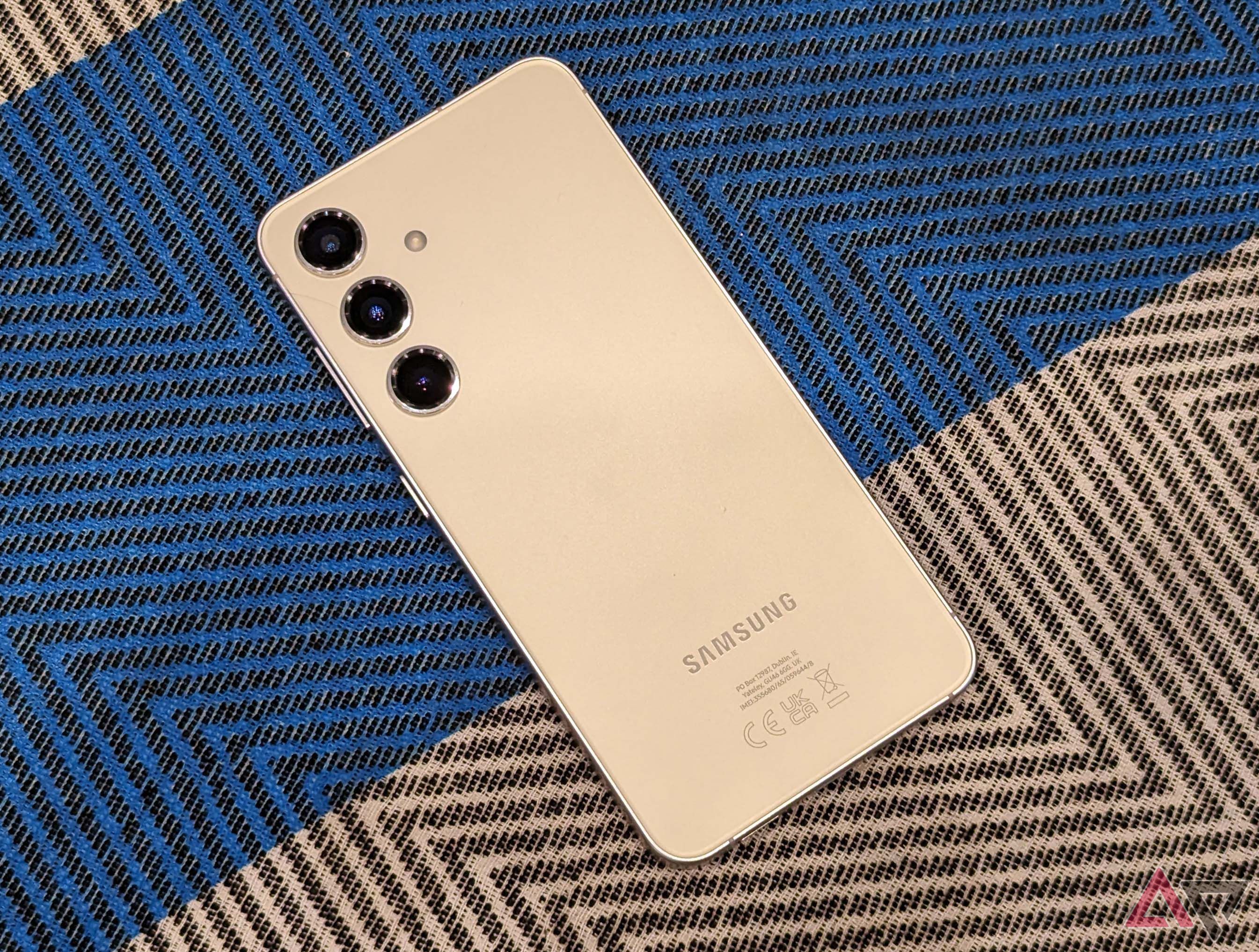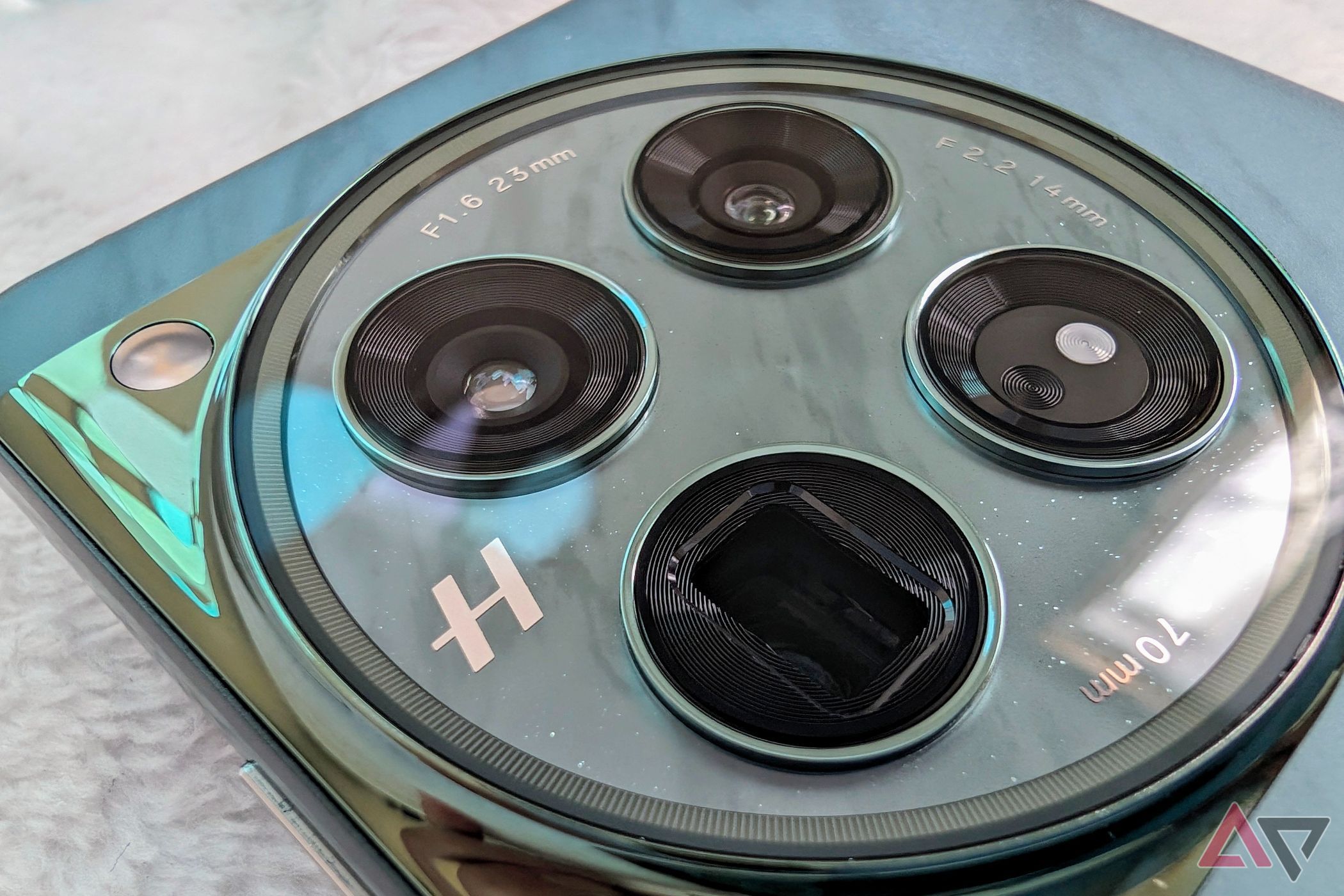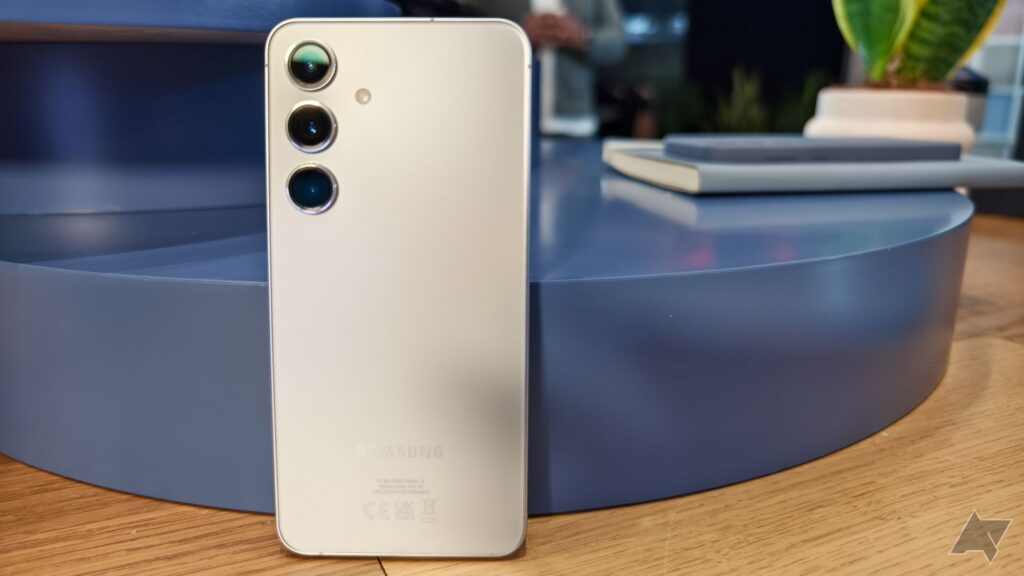-
OnePlus 12
No compromises
$800 $900 Save $100
With an unmistakable design, the OnePlus 12 is the brand’s latest flagship. This year’s model packs in an even more impressive Hasselblad-tuned camera array, the latest Snapdragon 8 Gen 3 chip, and some of the best charging speeds on the market, plus a bright and brilliant 6.8-inch OLED screen.
Pros- Top-notch performance
- A fantastic display
- Excellent battery life and fast charging
Cons- OxygenOS has some irritating inconsistencies
- Optical fingerprint reader should be retired
- Can’t buy at carrier stores
-
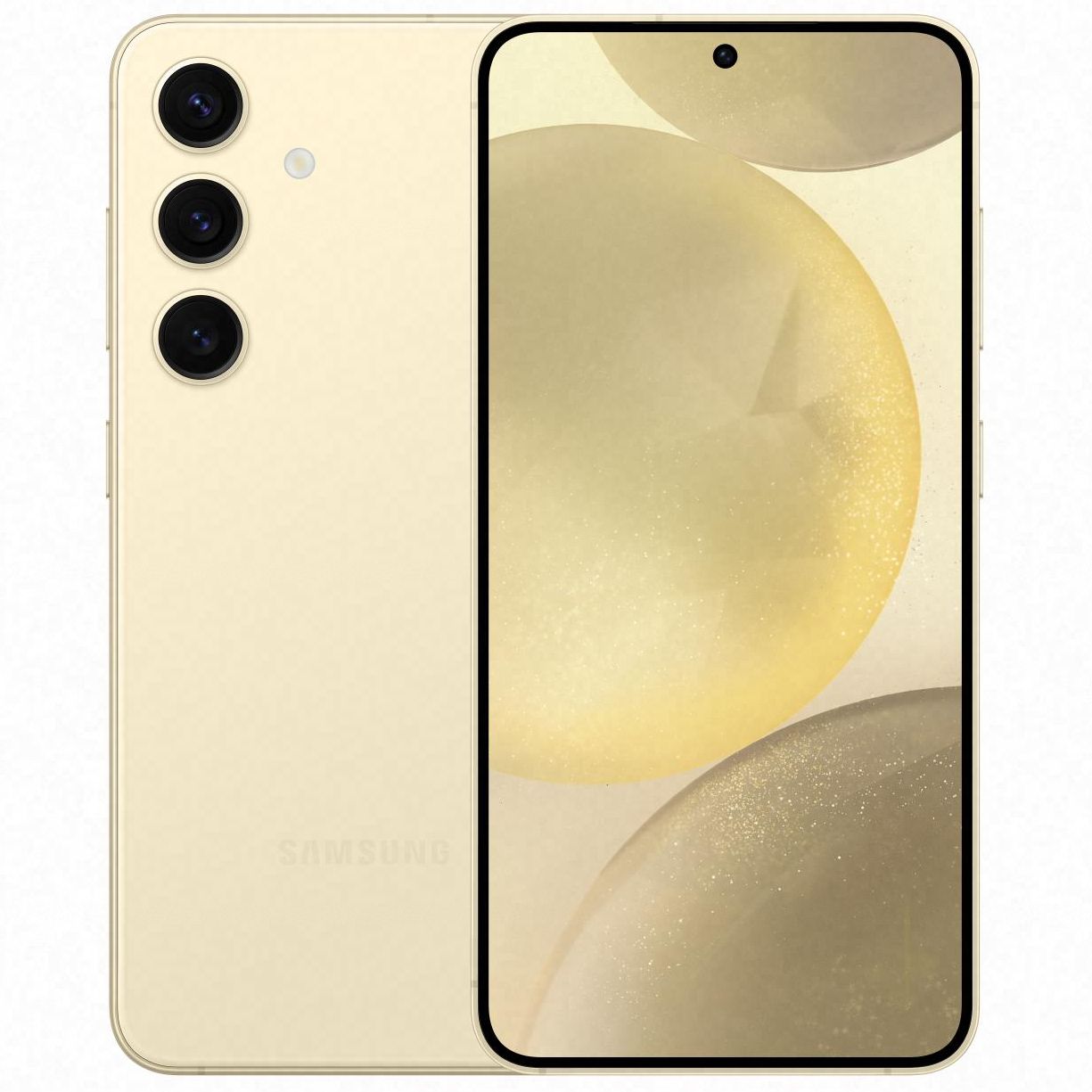
Samsung Galaxy S24
A pocketable powerhouse
Samsung’s Galaxy S24 packs in a surprising amount of power for its diminutive size, since it uses the same Snapdragon 8 Gen 3 chip as its larger siblings. This now powers a host of new Galaxy AI features while offering solid cameras and performance to spare for the latest games.
Pros- Excellent performance in a small package
- Great new design
- Powerful Galaxy AI features
Cons- Modest camera improvements
- Caps out at 256GB of storage
- Slower 25W charging
OnePlus and Samsung have just kicked off 2024 with a bang with some exciting new flagships. While the OnePlus 12 stands alone as the enthusiast brand’s premium entry, Samsung has naturally unveiled its entire Galaxy S24 lineup — and it’s done so earlier than usual this year, giving us our first contenders for the best Android phones.
As with their predecessors, the OnePlus 12 and the Galaxy S24 offer the latest and greatest bleeding-edge hardware specs. And while Samsung has reserved some of those as usual for its premium Galaxy S24 Ultra, the diminutive Galaxy S24 is still a pocketable powerhouse thanks to the Snapdragon 8 Gen 3 platform.
Still, even at similar price points, these two phones have as many differences as similarities, so it can be tricky to figure out which one is best for your money. Let’s dive in and take a look at how they measure up.
Price, availability, and specs
Following a late 2023 launch in China, the OnePlus 12 hit North America’s shores in January; it can be purchased directly from OnePlus’ website and other online retailers like Amazon, where it starts at $800 for the basic Silky Black 256GB model with 12GB of RAM. An additional $100 will get you an upgrade to the 512GB/16GB configuration, which also comes in an exclusive Flowy Emerald finish.
Samsung’s Galaxy S24 also got an early 2024 release this year, going up for preorder on January 17, the same day it was announced. It comes in at a similar $800 starting price, although that will only net you 128GB of storage and 8GB of RAM. You can upgrade to 256GB storage, but there’s no 512GB option available. It’s available in Onyx Black, Marble Gray, Cobalt Violet, and Amber Yellow, plus exclusive Jade Green, Sapphire Blue, and Sandstone Orange colors if you order directly from Samsung.
-
OnePlus 12 Samsung Galaxy S24 SoC Qualcomm Snapdragon 8 Gen 3 with CPU-Vitalization Qualcomm Snapdragon 8 Gen 3 for Galaxy (US), Exynos 2400 (worldwide) RAM 12GB or 16GB LPDDR5X 8GB Storage 256GB or 512GB 128GB or 256GB Battery 5,400mAh 4,000mAh Ports USB-C 3.2 USB-C Operating System Android 14 with OxygenOS 14 Android 14 and One UI 6.1 Front camera 32MP, f/2.4 12MP, f/2.2 Rear camera 50MP, f/1.6, OIS main; 48MP, f/2.2 ultrawide; 64MP, f/2.6, OIS, 3x telephoto 50MP, f/1.8 OIS main; 12MP, f/2.2 ultrawide; 10MP, f/2.4, 3x telephoto Connectivity IR blaster, NFC NFC Dimensions 164.3 x 75.8 x 9.2mm 147.1 x 70.6 x 7.6mm Colors Flowy Emerald, Silky Black Onyx Black, Marble Gray, Cobalt Violet, Amber Yellow, Jade Green, Sapphire Blue, and Sandstone Orange Display type LTPO AMOLED, 120Hz AMOLED, 1-120Hz Weight 220g 168g Charge speed 80W wired (100W international), 50W wireless 25W wired, 15W wireless IP Rating IP65 IP68 Price From $800 From $800 Stylus No No Display dimensions 6.82″, 19.8:9 6.2″, 19.5:9 Display resolution 3168 x 1440 2340 × 1080 Charge options USB-C SuperVOOC wired, AirVOOC wireless USB-C wired, Qi wireless SIM support Dual nano-SIM slot Dual SIM (Nano SIM and eSIM) Cellular connectivity Sub-6 5G, LTE 4G LTE, 5G (sub-6 and mmWave) Wi-Fi connectivity Wi-Fi 7 Wi-Fi 6E, Wi-Fi Direct Bluetooth Bluetooth 5.4 Bluetooth 5.3
Design
OnePlus has always leaned toward bolder and more opinionated phone designs. The OnePlus 11 took that in a fun new direction with its rounded camera array, and this year’s OnePlus 12 follows suit, refining that design rather than overhauling it. The camera module now sports a metal ring reminiscent of a classic watch, and a stylized “H” replaces the older Hasselblad branding. OnePlus has also stuck with its classic black and green shades and whimsical names; this year, those are Silky Black and Flowy Emerald for the OnePlus 12 models sold outside of China.
Meanwhile, Samsung seems to have hit its design stride. Last year, the Galaxy S23 eliminated the camera bump to go with a cleaner and more minimalist design that aligns it with the flagship Galaxy Ultra series and even brought it to its midrange and entry-level A-series phones. So, it’s not a big surprise to see the Galaxy S24 following the same trend.
That doesn’t mean it’s a carbon copy of the Galaxy S23. Although the camera array remains the same as before, Samsung has ditched the curves this year in favor of an iPhone-like flat-edged design with slimmer and symmetrical bezels. The small things count, and these changes set the Galaxy S24 apart from the OnePlus 12, which retains the familiar rounded edges.
While the Galaxy S24 gets a slight increase to a 6.2-inch screen, it’s still dwarfed by the OnePlus 12, which saw a similar 0.1-inch increase over the already plus-sized OnePlus 11, bringing it to 6.8 inches. That larger size is also reflected in its weight, with the OnePlus 12 coming in at 220 grams versus 167 grams for the Galaxy S24. There’s little doubt that the Galaxy S24 is a far more compact and pocketable device.
Regarding durability, the OnePlus 12 has adopted Gorilla Glass Victus 2 for the front screen, but it’s still behind Samsung, which has moved to Corning’s latest Gorilla Armor. OnePlus also continues to lag in water resistance, with an IP65 rating that’s an improvement over last year’s IP64 but still disappointing for a phone in its class, as it offers protection against little more than splashes. The Galaxy S24 retains the same IP68 rating as its predecessor, tested to withstand immersion in up to 1.5 meters of fresh water for up to 30 minutes.
Display
The OnePlus 12 features a bold 6.8-inch AMOLED LTPO panel with a 3168 x 1440-pixel resolution that works out to 510 pixels per inch (psi). However, the most significant selling points are an eyeball-searing peak brightness of 4,500 nits and support for 2,160Hz pulse width modulation (PWM) dimming. That last part could significantly reduce eye strain and headaches for those sensitive to flickering on OLED screens.
While the Galaxy S24 doesn’t reach either of those heights, it’s still one of Samsung’s typically fantastic 120Hz AMOLED 2X screens that provides bold and brilliant color saturation, plus 2,600 nits of brightness, which should be more than enough to see it on a bright sunny day. However, the 2340 x 1080 resolution leaves the pixel density at a lower 416 ppi.
Samsung has doubled the PWM frequency to 492Hz. It’s the first time the company has bumped this number in years, and while it’s still a fraction of what OnePlus offers, it brings in more in line with other flagships, including Apple’s iPhone lineup, which has used a 480Hz spec for the past couple of years.
However, the Galaxy S24 has another trick up its sleeve, with a newer and more colorful always-on display mode that lets you keep your wallpaper and widgets in view. That’s a nice addition to the Android landscape, which has tended toward monochromatic always-on displays, and the OnePlus 12 is no exception.
Software
The OnePlus 12 ships with Android 14 with the company’s usual OxygenOS layer on top. It’s about as far from pure Android as you can get and one of the more polarizing choices among custom skins. Most folks either love it or hate it, and OnePlus’ latest marketing of it has only added to the confusion. Nevertheless, if you’re already a OnePlus fan or looking for something different, OxygenOS offers some interesting enhancements. And OnePlus’ four-year update promise still applies here, which means the OnePlus 12 will someday get Android 18 and OxygenOS 18.
However, this year, Samsung has taken a page from Google’s book, matching its staggering seven-year update promise for the Galaxy S24. Since the latest smartphone naturally ships with Android 14 and Samsung’s One UI 6.1, this means that it’s destined to someday run Android 21 and One UI 13. Samsung’s One UI is also a custom Android skin, but it’s been around for long enough to achieve a level of stability and polish that OxygenOS lacks. It also includes several features that tie the Galaxy S24 more tightly into the company’s product ecosystem.
Performance
Considering that the OnePlus 12 and Galaxy S24 pack in Qualcomm’s latest Snapdragon 8 Gen 3 chip, they should be pretty evenly matched when it comes to performance. Samsung might have a slight edge with its customized “for Galaxy” version of the chip, but it’s fair to say that neither one of these phones will be a slouch for multitasking and gaming.
However, the OnePlus 12 comes out slightly ahead by packing in more RAM and offering a higher 512GB storage option. The Galaxy S24 offers 128GB and 256GB capacities, both of which only have 8GB of RAM, while the OnePlus 12 starts at 12GB with the 256GB model and ups that to 16GB if you opt for the 512GB configuration.
That extra RAM probably won’t make much of a difference for casual everyday use, but it’ll definitely provide more headroom for multitasking. However, Samsung is also pushing the limits of the Snapdragon 8 Gen 3 by taking advantage of its new AI capabilities — an area that OnePlus is ignoring for now.
This means that in addition to getting top-notch performance, the Galaxy S24 will also deliver the kind of features that were once the exclusive domain of Google’s Tensor-powered Pixel phones. This includes new features for translating live in-person conversations and phone calls, creating AI-generated summaries in Samsung Notes, and editing features for photos and videos that let you fill in backgrounds and even slow down action sequences.
Battery life
The OnePlus 12 packs in a 5,400mAh battery, which should deliver effortless all-day battery life — and then some. That’s considerably heftier than the 4,000mAh cell on the Galaxy S24, but it’s also not surprising considering the size differences between the two phones. Nevertheless, the Galaxy S23 got us through a day of typical use without any trouble, and the modest bump over that model’s 3,900mAh battery and the improved efficiency of the Snapdragon 8 Gen 3 can only help the Galaxy S24 do better.
The OnePlus 12 still has most of the competition handily beat in charging speeds. As with its predecessor, that means 80W charging in the U.S. (although some international models can still hit 100W charging), which can take the battery from dead to full in about 30 minutes. The OnePlus 12 also marks the return of wireless charging — something conspicuously missing from the OnePlus 11 — with speeds of up to 50W provided you opt for OnePlus’ AirVOOC wireless charger.
Compared to those specs, Samsung’s charging speeds are far more pedestrian. The Galaxy S24 still only does 25W wired charging — you’ll have to opt for the larger S24 Plus to go faster — plus the standard 15W Qi-standard wireless speeds.
The Galaxy S24 also offers 5W reverse wireless charging for earbuds. While the OnePlus 12 can offer double that, at 10W, it’s less significant, as most devices you’re likely to use reverse wireless charging for only draw 5W anyway.
Cameras
OnePlus’ camera claim to fame is in its partnership with Hasselblad, which lent its legendary photographic expertise to help tune the cameras for ideal color balance and saturation. This partnership came into its own with last year’s OnePlus 11, which showed impressive results. These continue with the OnePlus 12, which addresses some of its predecessor’s technical shortcomings with a 50MP primary (wide) sensor, 48MP ultrawide, and a 64MP periscope lens with a 3x optical zoom for much better close-up and telephoto photography. There’s also a virtual optical zoom that uses pixel-cropping to capture a 6x image using the middle 16 million pixels of the telephoto sensor.
While Samsung went down a similar road this year on its pricer Galaxy S24 Ultra, the cameras on the standard S24 models remain essentially unchanged from their predecessors. This means you’ll get a 50MP wide camera with a 12MP ultra-wide and a 10MP 3x telephoto, and any improvements will have to come from software. Samsung has promised a few changes in this area, such as better low-light photography — something that the Galaxy S23 struggled with. However, we’ll have to wait for comparison tests to see how that pans out.
The OnePlus 12 and Galaxy S24 should both produce great photos, but the OnePlus 12 has a solid edge with its Hasselblad tuning and a higher-quality telephoto lens with its 6x in-sensor zoom. It also offers Hasselblad-tuned bokeh and flare effects that look great, matching portraits taken from the company’s XCD 30mm and 65mm camera lenses. The OnePlus 12 is a better choice for serious smartphone photographers and could be one of this year’s best camera phones. However, that’s not surprising since Samsung reserves its best photography features for its highest-end flagship Galaxy Ultra series, so it’s harder for the smaller Galaxy S24 to compete on this level.
Which one is right for you?
Choosing between the OnePlus 12 and the Samsung Galaxy S24 may be a tough call since each will appeal to different needs. However, when it comes to raw specs and capabilities, the OnePlus 12 comes out on top thanks to its superior, Hasselblad-tuned camera system, bigger and brighter screen, better battery life, faster charging, and higher storage and memory capacities.
For the same $800 starting price, you get double the storage and 50% more RAM on the OnePlus 12, and that increases even more at the next price point, which reaches a 512GB storage capacity that Samsung doesn’t offer in the smallest Galaxy S24, plus 16GB of RAM.
Since the OnePlus 12 is the company’s top-tier flagship, it boasts the best cameras. While these may not hold their own against Samsung’s premium Galaxy S24 Ultra, they handily outpace the standard Galaxy S24 for anyone who wants to get the best photographic bang for their buck.
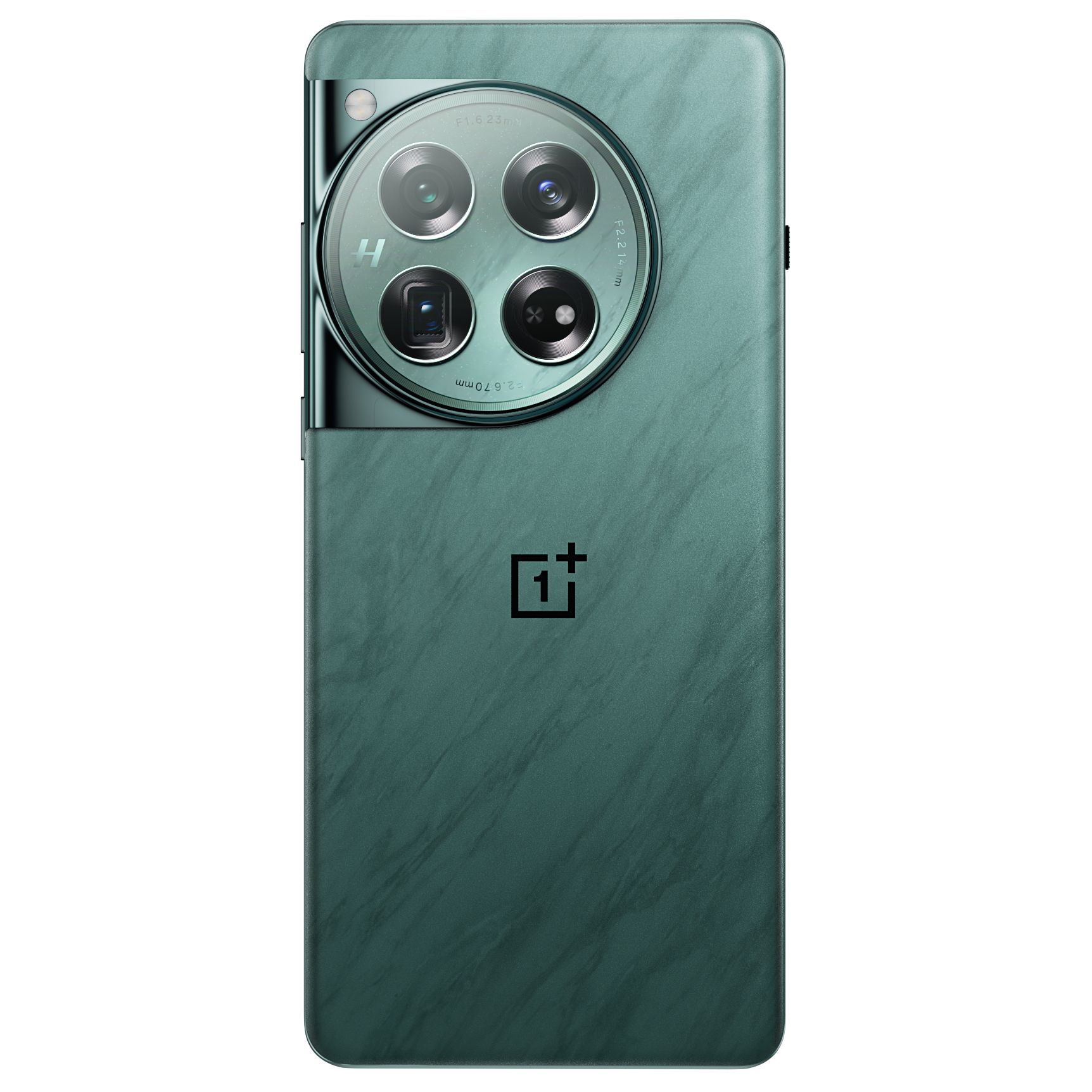
OnePlus 12
Best overall
Great model, from the display to the battery
$800 $900 Save $100
The OnePlus 12 refines the stunning design of its predecessor while offering a bigger, bolder, and brighter 6.8-inch screen and an even better camera array. It’s also powered by the leading-edge Snapdragon 8 Gen 3 chip and continues to feature excellent battery life and some of the fastest charging speeds available.
Nevertheless, the Galaxy S24 has several advantages over the OnePlus 12, not the least of which is that it delivers the same raw horsepower in a far more pocketable package while also introducing a slate of handy new AI features powered by the new Snapdragon 8 Gen 3 platform. These are capabilities the OnePlus 12 hasn’t embraced, despite packing in the same chip. You also get seven years of Android updates on Samsung’s more established One UI platform.

Samsung Galaxy S24
A solid runner-up
Nice specs, including AI enhancements
The pocketable Samsung Galaxy S24 delivers top-notch performance and sophisticated AI features with a brighter display and improved battery life. While the camera hardware hasn’t seen any significant upgrades, Samsung promises new software features that should deliver better low-light photography and more naturally balanced photos.
